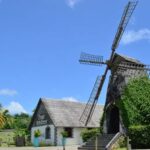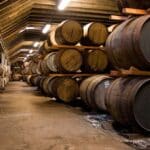4 Different Rum Production Countries. All with Spanish Heritage
Rum is a beverage with a history of adventure, encounters, risks, and immense passion. It represents the perfect harmony between two worlds.
In our previous article, we delved into its origins and its primary variations across Latin America.
However, on this occasion, we will embark on a journey through a pivotal turning point that transformed its history: the birth of a beverage that has captivated many who dare to savor it, a beverage that caresses the senses with just one sip – we are, of course, talking about rum.
Join us in this brief space to discover the nuances of this fusion of flavors and traditions.
Spaniards, Sea, and Sugarcane
Spaniards travel the Atlantic Ocean looking for new opportunities above the horizon.
Christopher Columbus discovered Hispaniola and Cuba in 1492, followed by Puerto Rico “Boringueña” in 1493, and a few years later, in 1498 Venezuela, a name that some historians say comes from little Venice, when Amerigo Vespucci explored Venezuelan coasts and saw their likeness to Venice.
Something that all these countries have in common is the introduction of sugarcane. Adventurous Spaniards decided to look for new opportunities, and venture into many industries. One of them was distillation.
With the idea of finding the perfect “Brandy”, the distillation of sugarcane began to emerge in these countries.
Initially, some referred to it as “tafia” or rather aguardiente. People described it as a beverage capable of inducing a pleasurable state of euphoria, an experience that established a precedent in the consumption habits of the New World.
What Happened in The Antilles
However, something was brewing in the Antilles. A new name began to circulate through the streets of Barbados – “Rumbullion” – a word that first appeared in official documents in the mid-17th century and later evolved into the term we recognize today: Rum.
Historians believe that experts from Brazil arrived in Barbados. Their expertise in cachaça production, combined with the caramelized sugarcane molasses grown on Barbados’ fertile lands, and the process of aging in barrels, gave rise to an amber-colored beverage with a slightly nuanced flavor: rum was taking shape.
Characterized by its elegance and distinctive flavor, this distillate, primarily extracted from sugarcane molasses, began to undergo various variations throughout Latin America and the Caribbean.
They all have their differences, which we would like to share with you!
Cuba: The Birthplace of Renowned Rums
Cuba emerged as the epicenter of sugar production. As in other regions, rum in Cuba initially found its way into the hands of slaves on plantations, serving as both a beverage and a currency for trade among themselves.
As Cuba became the Caribbean’s sugar production hub, and distilleries like Bacardí refined the manufacturing process in its early days and Havana Club, coupled with the skyrocketing demand and popularity in countries like the United States, Cuban rum became a star product.
Renowned figures like the writer and journalist Ernest Hemingway fell in love with the experience this beverage evoked in their senses, so much so that many decided to spend seasons living on the island.
The smoothness and sweet notes of the rum make it ideal for classic cocktails like the Mojito, the Daiquiri, and the Cuba Libre.
Puerto Rico: The Capital of Rum
Currently known as the “Rum Capital”, Puerto Rico began producing rum with subtle flavors that caress the palate.
Puerto Rico is renowned for its light and smooth rum, perfect for popular cocktails. Its versatility and consistent quality have made it a global favorite.
According to the island’s legislation, the designation “Ron de Puerto Rico” or “Puerto Rican Rum” is only granted to rums that meet the following requirements:
- The beverage must be produced and aged for a minimum of twelve (12) months on the island in barrels traditionally used by the industry to age their products.
- The age of the youngest spirit used in the blend will determine the overall age of the blend. Processed rums that are re-aged will be credited with that age.
Currently, with over six distilleries, 80+ rum expressions, and 70% of its sales in the United States, Puerto Rico could well deserve its title as the “Rum Production Capital.”
Dominican Republic: A Rum Steeped in Tradition
From the tropical soils that welcomed sugarcane to the New World emerges a rum courted by caramel, vanilla, and tobacco aromas. This marks the beginning of a tradition synonymous with commitment and culture.
The production of Dominican rum follows traditional methods passed down through generations. Each rum master puts their personal touch on the process, overseeing each stage with dedication and care.
Ron Barceló and similar brands distinguish themselves by producing rum from fresh sugarcane juice instead of molasses. Furthermore, Ron Barceló is the first rum brand with a carbon footprint certificate, demonstrating its dedication to the environment.
In 2021, Dominican rum also achieved its Denomination of Origin.
More than just a beverage, Dominican rum is a symbol of the island’s culture and history. Its exceptional flavor and indisputable quality make it a perfect ambassador for Dominicans worldwide.
Venezuela: Where Nature, Art, Science, and Patience Converge
In Venezuela, sugarcane cultivation began in the town of Tocuyo, Lara State, and flourished in the lands of Sucre State.
In Sucre, the blend of knowledge from Europeans arriving by the coasts and the climate gave rise to the epicenter of an industry that has seen the birth and growth of world-renowned brands such as Santa Teresa and Ron Carúpano.
For many years, before La Real Academia Española approved the word “Ron”, its popular name was “caña” (cane). It became so popular that, culturally, it is the word used to refer to any alcoholic beverage.
The spring waters of the coasts and the tropical climate converge in a drink that embraces notes of caramel, maple syrup, cocoa, and coffee.
“It’s a recipe not just for ingredients, but one that combines nature, art, science, and patience,”
Luis Figureoa, Ronero Master of Ron Cacique and Pampero in “Ron de Venezuela, el sabor del éxito”, a documentary
Over time, measures have been implemented to ensure the quality of this product. Currently, for a rum to meet the official designation of Ron De Venezuela, it must mainly meet the following characteristics:
- Sugarcane must be grown on Venezuelan soil.
- It must spend at least two years in barrels.
- The alcohol content must be 40 degrees.
The history of Rum takes the course of time. Whether due to its magic or the passion of those who are part of it, it never ceases to impress those who come to know it.
Information sources
Documentaries
- https://www.youtube.com/watch?v=IEa7enXfOeo&t=1393s&ab_channel=LatinaNoticias
- https://www.youtube.com/watch?v=YsvDc9FfxfE&t=517s&ab_channel=CinesaChannel
- https://www.youtube.com/watch?v=LDZe7nfNLMY&t=642s&ab_channel=AndariegoDO
Book
- “A True and Exact History of the Island of Barbados” — Richard Ligon Gent’s





